About six months ago, I took a victory lap. And I’m gonna take another one. Because I was right, all along. Last’s week’s twin announcements of the revamped DC line-up and Marvel’s all-woman A-Force showed that even the big two have embraced the idea of a diverse readership as a sound business model. It was only four years ago, when the New 52 launched, that there was an outcry about only 1% of the creators being female, and DC co-publisher Dan DiDio got put on the spot and reacted with a less than conciliatory tone.
And now, even gender-cruncher Tim Hanley notes that things improved dramatically with The New 24:
DC Comics made a big announcement today, revealing the post-“Convergence” line up for their main superhero titles. Along with 29 continuing titles, DC unveiled 24 new series and minis, many of which featured new creators and a variety of new and underutilized characters. It was a good day for women at DC across the board as well.
In recent interviews, DiDio revealed that this was just good sense:
DiDio: And there are a lot of first-time attendees there, who are new to the business, new to comics, and it’s for us to be able to grab these people and attract them.
And you know, I get a lot of anecdotal information from our writers and artists, especially when you talk to somebody like Jimmy [Palmiotti] and Amanda [Conner], who are commanding these monstrously long lines because of Harley Quinn right now, and it’s almost all women. They’re even taken aback by that, by this really intense loyalty and love for this character by an audience that includes a lot of women. And we realize that, and we have to really start to gear our product to attract them to more of our books.
So we try to find the trends that are drawing these changing audiences to shows and create product to really build on that interest.
Harley Quinn has consistently been one of DC’s top three sellers for a while, and that is hard to ignore. DiDio is surely referring to observations like this one, from Palmiotti last year:
What we are learning is that the traditional idea of done–in-one stories not selling in comics just doesn’t apply to the new audience buying the books, and believe me, most of that new audience are female. I think the problem right now is we have some people running the companies that just aren’t going out and trying new comics or interacting with the next wave of readers and keep pushing things the traditional way they did years ago. The retailers themselves are seeing this happening daily now and I feel it’s the reason Image comics will continue to grow and eventually outsell the big two, unless they start thinking outside the box and just make superheroes a PART of their publishing plan and not the entire thing and start looking at the different ways a superhero type of book can be done. Harley is one example, Hawkeye is another . The traditional graphics people associate comics with have been changing for years now and the market is embracing different looks and styles that are outside the house style and its pretty cool to see.
It is pretty cool!
The trail of evidence isn’t quite as clear for A-Force, because Marvel has been making sounds about appealing to female readers for quite some time, and Squirrel Girl, but the A-Force news as reported by Mashable supplied a bit more more support:
Though A-Force is its first all-female Avengers team, it’s not the first team title to feature only women. it’s not the first team title to feature only women. In fact, it’s the fifteenth; the most recent was last year’s X-Men run, which was comprised of all women. Marvel says its female fanbase has been exploding recently, and with the emergence of Captain Marvel, Ms. Marvel, Black Widow and more — and it’s easy to see why.
While DC’s move to the world of modern comics readership is more recent, the rise of the female comics buyer is old news if you’ve been reading this site for any length of time. But what has me sitting back in my recliner here at Stately Beat Manor and enjoying a victory 20-year port is that I’ve been saying that women liked comics for…all my life, really. And I was told I was wrong so many times. So many times.
I know I’ve talked about this many times, but I was given SO MANY REASONS why women couldn’t read comics—women aren’t visual, women don’t like action, women DON’T KNOW HOW TO READ COMICS. The most amazing thing about these statements is that they didn’t come from comment thread trolls but from the men who ran the industry for the last 30 years. That’s right, POWERFUL DECISION MAKERS IN THE COMICS INDUSTRY TOLD ME WOMEN DON’T KNOW HOW TO READ COMICS.
20 years ago, as an editor at a magazine where plenty of girls reads the comics and I had the fan letters to prove it, I was so incensed by this constant nonsense that I joined with a band of like-minded women (among them Deni Loubert, Anina Bennett, Martha Thomases, Cheryl Harris, Jackie Estrada, Liz SChiller and of course Trina Robbins) and we started an organization to show how getting more women readers could benefit the entire comics industry, because who doesn’t like new customers. I have to admit, the idea of greater revenue was more of an enticement for industry leaders to ponder this idea than just “Of course women like comics, they just don’t all like YOUR superhero comics.”
Friends of Lulu did some things right and some things wrong, but like I always say, at least we we started a dialog. And the internet finished it.
A few days ago, an 11-year-old girl wrote to DC Comics asking why there weren’t more comics for girls.
My name is Rowan and I am 11 years old. I love superheroes and have been reading comics and watching superhero cartoons and movies since I was very young. I’m a girl, and I’m upset because there aren’t very many girl superheroes or movies and comics from DC.
And the official DC Comics twitter actually answered her:
Thanks Rowan. We agree, we’re working hard to create more superhero fun for girls!
— DC (@DCComics) January 30, 2015
Yes Rowan, girls read comics too! Wonder Woman movie & Supergirl TV both in the works, with more exciting girl power announcements soon!
— DC (@DCComics) January 30, 2015
What’s that you say, girls don’t read comics because they don’t process visual information? Well I say SUCK IT.
Okay I know there is a long way to do and we need more women in positions of influence WITHIN the industry, and less objectification and for gods sake, can’t we make toys of superheroines, and there are one million other things every day that are dedicated to making sure that women are treated as less than equal, but for today on this one matter—that women don’t read comics—I think the case is closed and we can move on to the next challenge.
Before I got to talking about the next challenge, one more thing. The future of comics is probably going to be even more female. On his tour for The Sculptor, Scott McCloud has been quoted as saying that he expected the comics industry to be female-dominated in every way by 2024. I don’t know that setting a nine-year time frame is exactly right, but as I’ve also mentioned here many times, most cartooning schools are female dominated now, and on the indie scene, female cartoonists seem to be getting the most attention. The Comics Reporter ran one of its Five for Friday reader survey asking for respondents to “Name Five Comics-Makers You Like Age 30 Or Younger and I’ve stolen the entire list because it’s at least 50% female (also a great list, check out the links)
Afonso Ferreira
I could do a whole post on how Allie Brosh, Roz Chast and Mariko Tamaki and Jillian Tamaki ruled the world of graphic novels last year, but it’s clear that women can not only read comics, they can make them too. And that phenomenon doesn”t show any signs of slowing down.
Now, this could all be a fad, or a marketing trend or someone could put a halt to it tomorrow, because that’s traditionally what happens when women try to take on positions of authority and respect. In the 90s we had Ripley and Xena and Buffy and Scully and we’re still arguing about whether woman can star in action shows and films. In the 80s we had Louise Simonson and Elaine Lee and Christy Marx and people still thought that women couldn’t write mainstream comics. Hell, in the 50s we had Lucille Ball and people still say women aren’t funny. My laurel resting lasts for the duration of this post and no longer. But just this one time: “I WAS RIGHT! I WAS RIGHT ALL ALONG!”
BUT…the battle is still on. Last week, one of my Friends of Lulu fellow soldiers, Martha Thomases wrote a column called The Great Comic Book Lock-Out which talks about girls reading comics, but also the wider narrow-mindedness:
There seems to be a school of thought in which the only fiction available to readers is about the readers themselves. Boys can only read about boys. Girls can only read about girls. African-Americans can only read about African-Americans or, possibly, racial minorities can only read about other racial minorities. Certainly, the thinking goes, white kids are only interested in reading about other white kids.
Let me be clear. I don’t think there is some kind of committee that issues these edicts. I think it is a more subtle form of bigotry.
Comics may have “solved” the woman question for the moment, but they have a lot more problems to solve where diversity is concerned. David Walker writing Cyborg is nice, but we need a lot more non-white voices in comics. People of every race and ethnicity around the world also read comics, and the American comics industry needs to recognize that. Hell, American culture in general needs to recognize that. As a country, we’ve taken many steps backwards in that regard, and it’s this kind of regression that makes me wary of any supposed progress on any front. I do think refuting foolish statements like “Women aren’t visual so they don’t like comics or superheroes” is a step-forward, but it’s far from the only foolish idea running our entertainment industry.
But today, at least for one day, the smart people won.


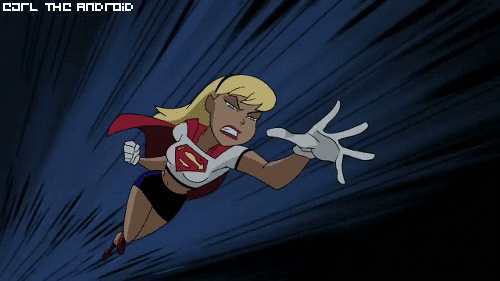
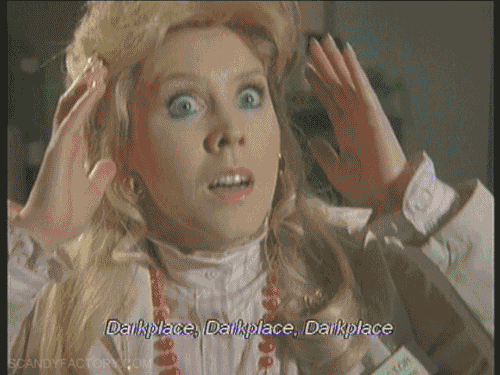
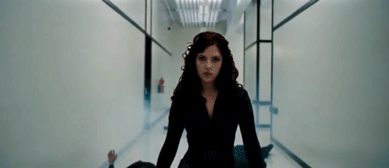
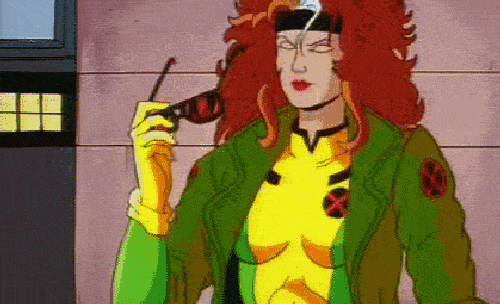
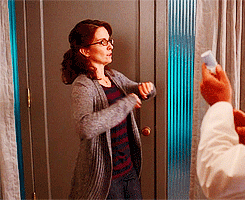
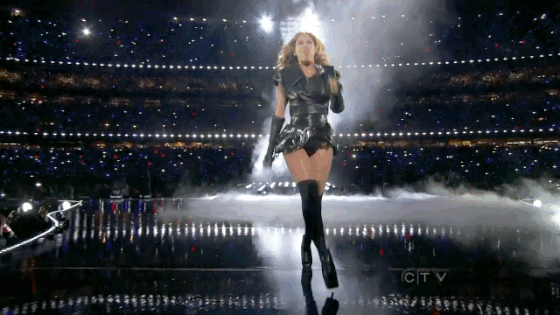

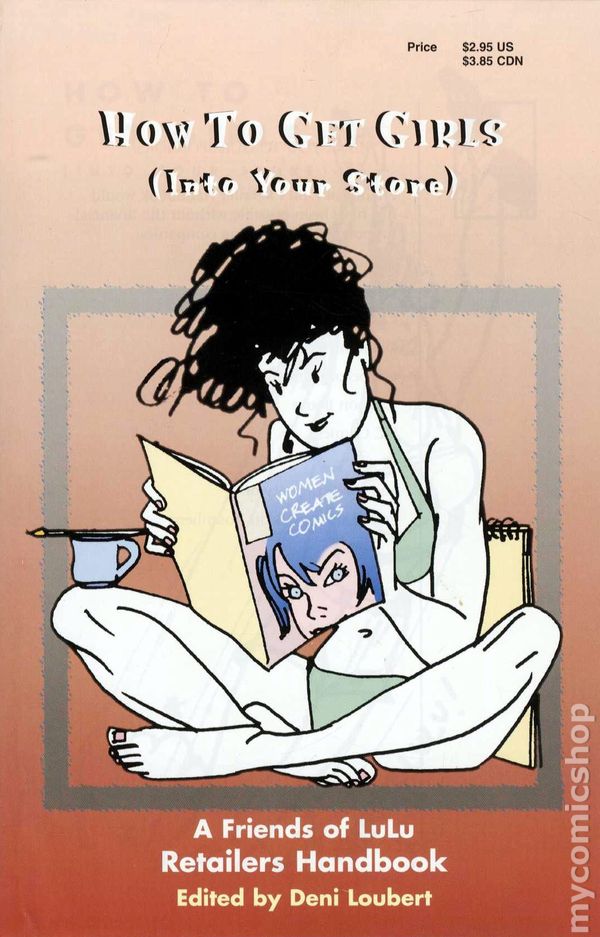
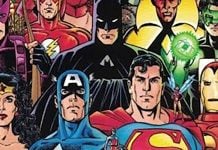

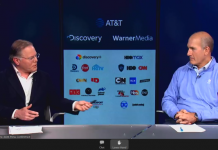



I say feel free to bask as long as you like, Heidi. There’s certainly more work to be done, but dang if this isn’t a welcome sea change.
Also: more gifs please!
Nice piece. Imagine that, if you publish material that isn’t specifically blocking out an entire section of the audience, they’ll come back to the material.
I think Greg Pak mentioned that this was one of the largest amounts of people of color on DC, too. Think about THAT…how low that bar is set!
Woo-hoo, great wrap-up Heidi! A little seizure-inducing what with all the GIFs the kids are so crazy for nowadays, but spot-on. Particularly the implication we may have to go through this all again soon. It’s like the XKCD strip where, in the first panel, a guy criticizes another guy’s math by saying “You suck at math,” and in the second panel he criticizes a girl who attempted the same problem by saying “Girls suck at math.” I fear the first new round of shortfalls re sales or viewers or readers won’t be blamed on the particular story or TV show or movie, but will once again be along the lines of “XXX featuring women just doesn’t sell.” Still, until that happens, save this fellow Lulu soldier a seat at the party!
Good grief, even Barbie’s official website right now features a “superhero” Barbie and even a comic-making tool.
Let me repeat: the Barbie brand acknowledges that girls not only know how to read comics but can MAKE them.
Come on, Internet, get with the times.
Oh man! I totally have a copy of that handbook that was languishing at my (female) former boss’ comic shop. By the time I read it, it was the mid-2000s and I was already actively ordering and promoting books by female creators and/or starring female leads but it was kind of great to read.
Absolutely right that POC representation is the next big hurdle, as well as (I’d say) queer representation, especially for non-cis characters/creators. Always another building block.
For now celebrate the victory.
@ gia: Now if Barbie would only acknowledge that women’s waists are not the size of Vampira’s.
Don’t see how anyone could not view this a great development. There’s room for everyone to play in comics. More voices equals more choices — and that equals more comics to read! How is that not a win for all of us?
“Don’t see how anyone could not view this a great development.”
I’ve seen message-board comments about this new Divergence-verse (“di-verse”?), complaining that “this DCU isn’t for me”. Of course what they meant was “this DCU isn’t exclusively for me” … but in their mind, that’s the same thing.
Gene Yang was speaking at Fantastic Comics in Berkeley a few years ago and said Asian Americans had more success in comics than any other entertainment field.
@Jason I’ve seen many similar comments from “longtime readers” specifically on Dan DiDio’s Facebook page. I can;t help to think That publishers like him are finally realizing the risk/reward is much better to focus on the people not currently buying comments than those who just continually add, with diminishing returns, to the standard attrition of them.
No, it’s not a fad.
Because KIDS are hungry for graphic novels, and we finally have a critical mass of GREAT titles to recommend to those readers. Not to mention that with every Newbery, Caldecott, Printz, and YMA award, another library will order those books for the collection.
What happens ten years from now, when these middle school kids, influenced by Smile and Amulet and Wimpy Kid, who have been drawing FOREVER, start making webcomics? (Heidi, your portfolio reviews will only get more difficult.)
What happens to the manga kids now in art school, learning all sorts of stuff from the painters, the filmmakers, the sculptors, the animators, the professors? There are a lot of picture books being published each year, some by publishers who also publish graphic novels. Hell, Dan Santat, winner of the Caldecott this year, created a graphic novel a few years ago! Picture books… words and pictures… 32 pages…
Also, Super Barbie isn’t new. The last issue of Marvel’s Barbie. #63, featured “Flying Hero Barbie” from 1996. (Yes, it came with a mini-comic!) “By Lisa Trusiani and Mary Wilshire. Cover by Amanda Conner and Jeff Albrecht. ”
Oh, and while Barbie may not have a current graphic novel, Monster High DOES. They even have a “Power Ghouls” series where they dress up as superheroes, and the dolls come with comics! Ghoulia Yelps is the geeky analog.
didn’t Disney buy Marvel specifically to appeal to the boy market?
Of course, none of this will matter if the comics aren’t GOOD.
The idea that “girls don’t read comics” is ridiculous. As Trina Robbins and others have pointed out, there was a time — from the late ’40s to the early ’60s — were female readers may have outnumbered male readers. Those were also (maybe not coincidentally?) the years when superheroes didn’t dominate the industry.
Girls and women will read comics if you give them something they want to read, but for the last 40 years, Marvel and DC have been largely clueless about what that might be. Pandering to the “dudebro” audience certainly hasn’t helped.
great list by the way, thanks for putting it together!
Honestly, the comment sections on some A-Force articles made me realize just how important that comic is. The old guard of the comic fandom is more vitriolic than usual. The amount of venom spewing because a comic’s gonna celebrate women creators and characters is astounding. I was already in for Wilson, but I might order several and just give em out. Really want that title to go gangbusters.
The old guard fans who can’t stand change should read this: “Your Childhood Entertainment Is Not Sacred.” Of course, it will probably make them more vitriolic:
http://thedissolve.com/features/exposition/903-your-childhood-entertainment-is-not-sacred/
Pass this on to the next person who whines about Hollywood (or Marvel or DC) ruining their childhood with remakes and reboots. It pretty much says it all.
Lulu’s torch may have been passed. A “Women in Comics NYC Collective” is hosting a Women in Comics Panel at First Con-tact on Valentines Day at LaGuardia Airport Marriott.
George says:
02/10/2015 at 4:41 pm
Of course, none of this will matter if the comics aren’t GOOD.
The idea that “girls don’t read comics” is ridiculous. As Trina Robbins and others have pointed out, there was a time — from the late ’40s to the early ’60s — were female readers may have outnumbered male readers. Those were also (maybe not coincidentally?) the years when superheroes didn’t dominate the industry.”
Also the years when merely two mega-series (the Marvel universe and the DC universe) didn’t dominate the industry.
Seems like comics back then were more like mystery and romance novels. Then and now, the mystery genre has lots of detectives in lots of series that don’t have tons of guest stars in each others’ books. Then and now, the romance genre has lots of couples in lots of series that don’t have tons of guest stars in each others’ books.
“Girls and women will read comics if you give them something they want to read, but for the last 40 years, Marvel and DC have been largely clueless about what that might be. Pandering to the “dudebro” audience certainly hasn’t helped.”
Putting so many of their eggs in the baskets of only two mega-series (the DC universe and the Marvel universe) hasn’t helped either.
Imagine if the mystery genre was mostly retellings of Sherlock Holmes, not just private investigators but every time a detective named Sherlock Holmes, and mystery publishers tried to attract female audiences mostly with “this time we made Watson female instead of male!”
Imagine if the romance genre was mostly retellings of Romeo and Juliet, not just star-crossed lovers but every time a hero actually named Romeo and a heroine actually named Juliet, and romance publishers tried to attract African-American audiences with “this time we made Juliet black instead of white!”
Closer to home, imagine if TV and movie science fiction was mostly Star Trek, and George Lucas just made a few Star Trek reboots with light sabers and storm troopers instead of making Star Wars.
I can understand wanting to see more demographic diversity in a genre and format.
I can understand wanting to see a character keeping more of his or her characterization than just his or her name, instead of seeing his or her backstory/religion/ethnicity/gender/etc. change frequently.
These don’t have to be mutually exclusive! The rest of fiction media has shown us how it’s done! :D
George, thanks for the http://thedissolve.com/features/exposition/903-your-childhood-entertainment-is-not-sacred/ link. Nathan Rabin’s so right :D about how some fans are too attached to these franchises.
OTOH, he doesn’t go far *enough* in his direction. I mean, he says “There’s an unmistakable element of generational chauvinism to these complaints as well. I want my son, who is now just under four months old, to watch and love Ghostbusters the way I did when I was eight years old.”
When Rabin was 8 years old, he watched and loved a fresh, new story – that is, Ghostbusters. Rabin should ask himself, what if in 1984 Ivan Reitman instead directed a sequel/reboot/etc. of something that Rabin’s father loved at age 8, and so Ghostbusters never got made in the first place?
I mean, we’re not limited to what’s showing at the cinema anymore! I can watch DVDs of stuff made up for my parents’ generation :D *and* watch newer stuff made up for my generation :D :D instead of just watching stuff made up for my parents’ generation and rehashed for my generation. :( Why should the next generation be limited to watching stuff made for older generations and merely rehashed for their own generation? :(
Heidi, the only person who could possibly feel even more validated than you is me.
Wow really cool really amazing
Comments are closed.